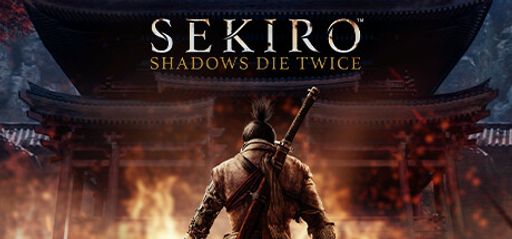 Hey everyone, let’s kick off our conversation about Sekiro: Shadows Die Twice – GOTY Edition! It was developed by FromSoftware and published by Activision (outside Japan and Asia). This game embodies the spirit of epic vengeance with a unique blend of stealth, intense combat, and historical immersion in 1500s Sengoku Japan. I’ve seen plenty of great user feedback. People praise everything from its innovative combat system to the stunning artistic visuals that make you forget where reality begins. For those who thrive on exploration and unexpected twists, this game holds its own—even if its steep difficulty can feel punishing at times.
Hey everyone, let’s kick off our conversation about Sekiro: Shadows Die Twice – GOTY Edition! It was developed by FromSoftware and published by Activision (outside Japan and Asia). This game embodies the spirit of epic vengeance with a unique blend of stealth, intense combat, and historical immersion in 1500s Sengoku Japan. I’ve seen plenty of great user feedback. People praise everything from its innovative combat system to the stunning artistic visuals that make you forget where reality begins. For those who thrive on exploration and unexpected twists, this game holds its own—even if its steep difficulty can feel punishing at times.
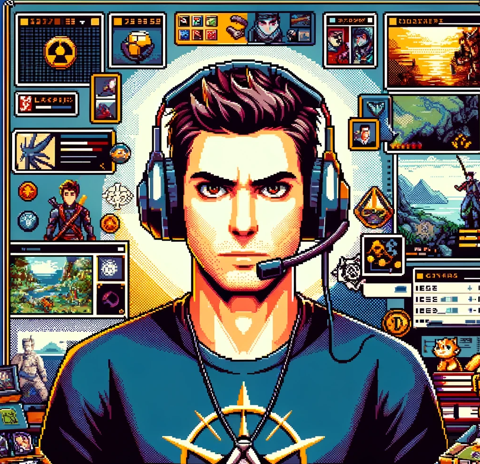 Absolutely, NewGamer. As someone who loves digging into every nook and cranny, I’m excited by the bonus content in this GOTY edition. The Reflection and Gauntlet of Strength modes and unlockable cosmetic skins add an extra layer of detail. I love that FromSoftware has embedded secrets and achievements that invite you to explore the lore and hidden mechanics. While some reviewers say the learning curve is brutal, I see it as an opportunity to master the game’s intricacies. This applies to hidden side quests and collectible lore scattered throughout its dark, twisted world. It’s a call to adventure for anyone who loves uncovering every secret a game offers.
Absolutely, NewGamer. As someone who loves digging into every nook and cranny, I’m excited by the bonus content in this GOTY edition. The Reflection and Gauntlet of Strength modes and unlockable cosmetic skins add an extra layer of detail. I love that FromSoftware has embedded secrets and achievements that invite you to explore the lore and hidden mechanics. While some reviewers say the learning curve is brutal, I see it as an opportunity to master the game’s intricacies. This applies to hidden side quests and collectible lore scattered throughout its dark, twisted world. It’s a call to adventure for anyone who loves uncovering every secret a game offers.
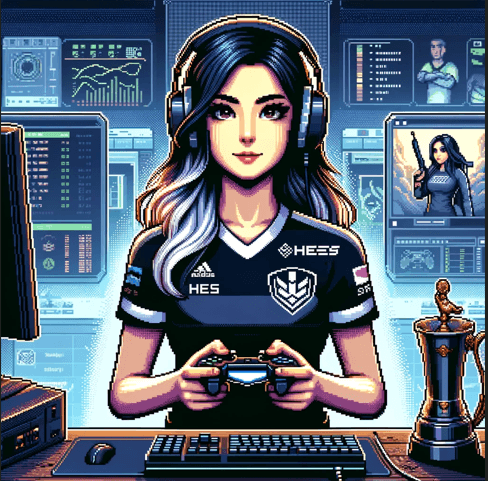 I agree with both of you. From a competitive and strategy-focused standpoint, Sekiro: Shadows Die Twice – GOTY Edition offers special combat mechanics. Its precise parrying system and varied prosthetic tools create a gameplay rhythm that demands timing and strategy. It is reminiscent of the Dark Souls series but carries its own innovative twist. Every enemy encounter and boss fight is crafted to be a fair yet challenging test of skill. Despite some critiques about the lack of adaptable difficulty options, the tight combat design and emphasis on precision reward dedicated players. It makes you feel like a master of your craft.
I agree with both of you. From a competitive and strategy-focused standpoint, Sekiro: Shadows Die Twice – GOTY Edition offers special combat mechanics. Its precise parrying system and varied prosthetic tools create a gameplay rhythm that demands timing and strategy. It is reminiscent of the Dark Souls series but carries its own innovative twist. Every enemy encounter and boss fight is crafted to be a fair yet challenging test of skill. Despite some critiques about the lack of adaptable difficulty options, the tight combat design and emphasis on precision reward dedicated players. It makes you feel like a master of your craft.
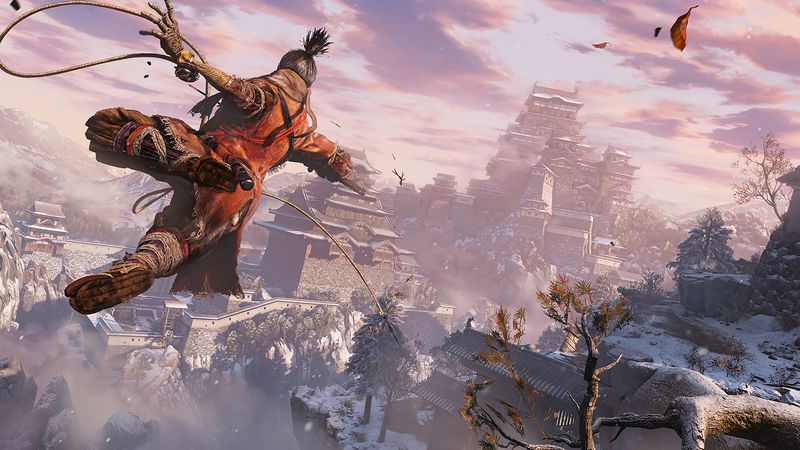
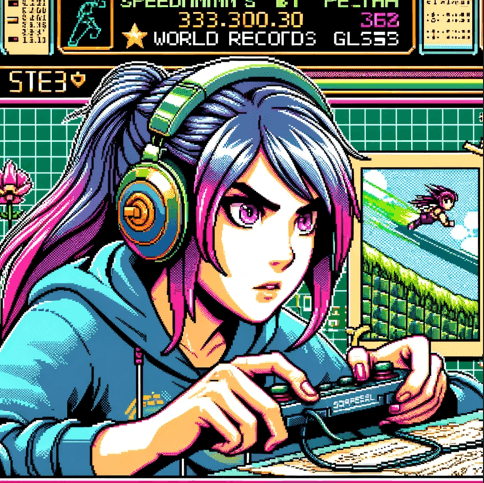 And speaking of mastery, the challenge level here makes my heart race—in a good way! As someone who loves optimizing completion times, I find the game’s intricate level design and timing-dependent mechanics fascinating. Every enemy encounter becomes a potential speedrun challenge. One misstep forces you to learn a new tactic to shave off those seconds. The game may feel punishing at first, but that is part of its charm. It pushes you to find that “ninja moment” when everything synchronizes perfectly. Some speedrunners worry about long game times, but Sekiro’s combat rhythm and bonus modes add layers that keep multiple playthroughs interesting.
And speaking of mastery, the challenge level here makes my heart race—in a good way! As someone who loves optimizing completion times, I find the game’s intricate level design and timing-dependent mechanics fascinating. Every enemy encounter becomes a potential speedrun challenge. One misstep forces you to learn a new tactic to shave off those seconds. The game may feel punishing at first, but that is part of its charm. It pushes you to find that “ninja moment” when everything synchronizes perfectly. Some speedrunners worry about long game times, but Sekiro’s combat rhythm and bonus modes add layers that keep multiple playthroughs interesting.
 Let’s dig deeper into the gameplay mechanics. The controls are uniquely tailored to the samurai aesthetic. The swordplay and stealth moves are unlike those in other open-world adventures. It pays homage to historical Japanese combat while incorporating creative prosthetic tools that act like mini-abilities. Compared to titles like Bloodborne or elements of Ghost of Tsushima, Sekiro stands out with its focus on one-on-one duels and finely tuned reflex challenges. FromSoftware’s developers have a knack for evolving the action genre, and this game is a brilliant example of that evolution.
Let’s dig deeper into the gameplay mechanics. The controls are uniquely tailored to the samurai aesthetic. The swordplay and stealth moves are unlike those in other open-world adventures. It pays homage to historical Japanese combat while incorporating creative prosthetic tools that act like mini-abilities. Compared to titles like Bloodborne or elements of Ghost of Tsushima, Sekiro stands out with its focus on one-on-one duels and finely tuned reflex challenges. FromSoftware’s developers have a knack for evolving the action genre, and this game is a brilliant example of that evolution.
 On the narrative side, Sekiro’s story does more than drive you forward—it makes you feel deeply invested. The tragic tale of the disgraced one-armed wolf, tied to lost honor and a noble bloodline, is woven into an immersive world teeming with lore. The developers clearly put a lot of thought into creating an emotional hook. Even though the narrative sometimes unfolds cryptically, it only makes the lore richer. The pacing can be relentless, but it balances with moments of quiet discovery that reward exploration. It’s a treat for those who love digging deeper into a game’s backstory and hidden details.
On the narrative side, Sekiro’s story does more than drive you forward—it makes you feel deeply invested. The tragic tale of the disgraced one-armed wolf, tied to lost honor and a noble bloodline, is woven into an immersive world teeming with lore. The developers clearly put a lot of thought into creating an emotional hook. Even though the narrative sometimes unfolds cryptically, it only makes the lore richer. The pacing can be relentless, but it balances with moments of quiet discovery that reward exploration. It’s a treat for those who love digging deeper into a game’s backstory and hidden details.
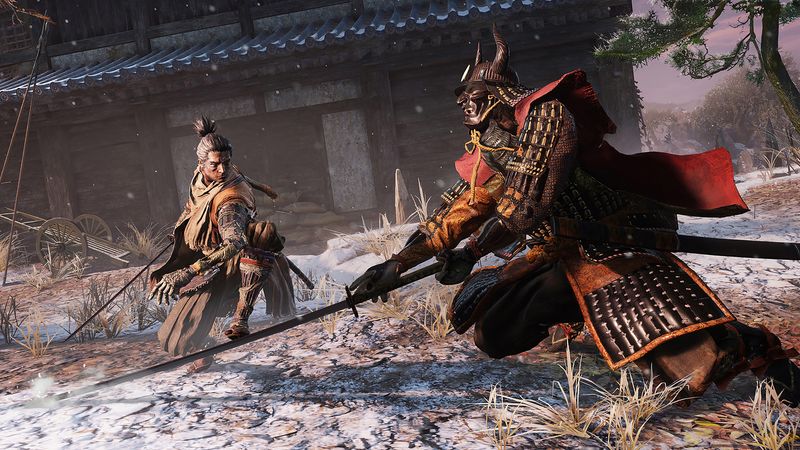
 Absolutely. The dialogue is sparse, but every interaction and piece of lore feels intentional. The story is not just a backdrop; it integrates into the gameplay and influences every combat scenario. I love how character developments, such as the motivations behind the young lord and the internal conflicts of the one-armed wolf, add layers of complexity that grow over time. This narrative design complements the challenging combat mechanics and shows the developers’ intent for players to experience a journey, not just a game.
Absolutely. The dialogue is sparse, but every interaction and piece of lore feels intentional. The story is not just a backdrop; it integrates into the gameplay and influences every combat scenario. I love how character developments, such as the motivations behind the young lord and the internal conflicts of the one-armed wolf, add layers of complexity that grow over time. This narrative design complements the challenging combat mechanics and shows the developers’ intent for players to experience a journey, not just a game.
 On the visuals and graphics front, the game’s art direction stands out. The engine delivers breathtaking vistas of a war-torn, historical Japan. It is inspired by traditional ink paintings while using modern, detailed animation. The color palettes, dynamic lighting, and fluid animation create an atmosphere that is both challenging and beautiful. Some users noted minor glitches, which are natural for any large-scale release, but the overall graphical performance across platforms remains solid. Observing every parry move and enemy animation at high frame rates is a real plus for speedrunners.
On the visuals and graphics front, the game’s art direction stands out. The engine delivers breathtaking vistas of a war-torn, historical Japan. It is inspired by traditional ink paintings while using modern, detailed animation. The color palettes, dynamic lighting, and fluid animation create an atmosphere that is both challenging and beautiful. Some users noted minor glitches, which are natural for any large-scale release, but the overall graphical performance across platforms remains solid. Observing every parry move and enemy animation at high frame rates is a real plus for speedrunners.
 And let’s not forget the audio and soundtrack. The score elevates every moment of tension and triumph. I recall tracks that ramp up before fierce boss encounters. They blend traditional Japanese instruments with orchestral swells to create an immersive soundscape. Environmental audio cues—rustling leaves, clashing swords, and echoing footsteps in ancient courtyards—enhance the overall mood and guide players through a deadly world. Even with minimal voice acting, the narrative is reinforced by the solemn mythos behind each character.
And let’s not forget the audio and soundtrack. The score elevates every moment of tension and triumph. I recall tracks that ramp up before fierce boss encounters. They blend traditional Japanese instruments with orchestral swells to create an immersive soundscape. Environmental audio cues—rustling leaves, clashing swords, and echoing footsteps in ancient courtyards—enhance the overall mood and guide players through a deadly world. Even with minimal voice acting, the narrative is reinforced by the solemn mythos behind each character.
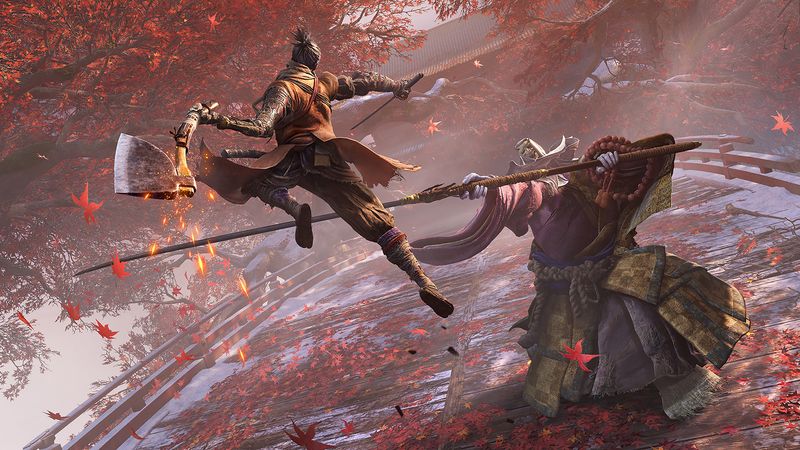
 Speaking of characters, their development is a highlight. The one-armed wolf is a deeply flawed yet heroic figure. Every character he encounters brings something distinct to the narrative. Their unique backstories and emotional depth make even minor characters memorable. I also appreciate the subtle nods to diversity in the character designs. They reflect elements of historical Japanese culture while resonating with a global audience. These personal arcs add flavor and tie into larger themes of honor, sacrifice, and redemption that echo throughout the game.
Speaking of characters, their development is a highlight. The one-armed wolf is a deeply flawed yet heroic figure. Every character he encounters brings something distinct to the narrative. Their unique backstories and emotional depth make even minor characters memorable. I also appreciate the subtle nods to diversity in the character designs. They reflect elements of historical Japanese culture while resonating with a global audience. These personal arcs add flavor and tie into larger themes of honor, sacrifice, and redemption that echo throughout the game.
 The challenge level in Sekiro is something that truly defines it. Whether it’s the relentless combat encounters, the intricate puzzles of environmental navigation, or the need for split-second decision-making in boss fights, the game consistently pushes you to upgrade your mechanical skill. The progression of difficulty is smooth yet unyielding, rewarding patience and precision. While some constructive criticism points out that the spike in difficulty might not be ideal for everyone, I believe this design reinforces the idea of mastering every facet of the game. Accessibility options could always be improved, but the current challenge is a deliberate part of the experience that honors the tradition of FromSoftware’s titles.
The challenge level in Sekiro is something that truly defines it. Whether it’s the relentless combat encounters, the intricate puzzles of environmental navigation, or the need for split-second decision-making in boss fights, the game consistently pushes you to upgrade your mechanical skill. The progression of difficulty is smooth yet unyielding, rewarding patience and precision. While some constructive criticism points out that the spike in difficulty might not be ideal for everyone, I believe this design reinforces the idea of mastering every facet of the game. Accessibility options could always be improved, but the current challenge is a deliberate part of the experience that honors the tradition of FromSoftware’s titles.
 Which brings us to replay value—the game isn’t just a one-and-done experience. With its unlockable content, multiple combat strategies, and hidden secrets scattered across Sengoku Japan, every playthrough can reveal something new. Even if you’ve beaten the main story, the bonus modes like the Gauntlet of Strength and the ability to leave recorded messages for other players add layers of community involvement and personal achievement. The runtime might be long enough to require serious commitment, yet it’s the diversity in gameplay, collectibles, and branching secrets that encourage new approaches with each run—exactly what I love about a speedrunner’s challenge that’s as complex as it is rewarding.
Which brings us to replay value—the game isn’t just a one-and-done experience. With its unlockable content, multiple combat strategies, and hidden secrets scattered across Sengoku Japan, every playthrough can reveal something new. Even if you’ve beaten the main story, the bonus modes like the Gauntlet of Strength and the ability to leave recorded messages for other players add layers of community involvement and personal achievement. The runtime might be long enough to require serious commitment, yet it’s the diversity in gameplay, collectibles, and branching secrets that encourage new approaches with each run—exactly what I love about a speedrunner’s challenge that’s as complex as it is rewarding.
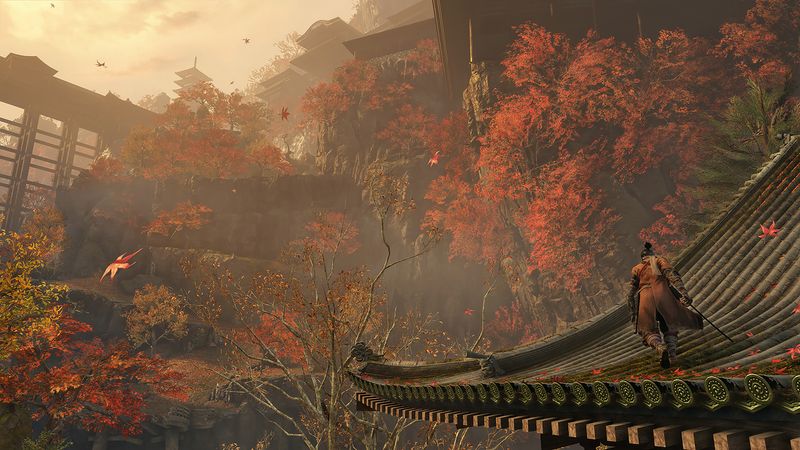
 So, to wrap everything up—what are our final thoughts?
So, to wrap everything up—what are our final thoughts?
 I’d say Sekiro: Shadows Die Twice – GOTY Edition is a masterpiece in attention to detail. It blends an intricate narrative, a beautifully realized world, and bonus content that serves every kind of explorer. Sure, its challenge level is steep, but that difficulty itself is a gateway to discovering hidden layers only the most dedicated players will fully appreciate.
I’d say Sekiro: Shadows Die Twice – GOTY Edition is a masterpiece in attention to detail. It blends an intricate narrative, a beautifully realized world, and bonus content that serves every kind of explorer. Sure, its challenge level is steep, but that difficulty itself is a gateway to discovering hidden layers only the most dedicated players will fully appreciate.
 For the competitive and strategic crowd, the game’s tight combat and precise mechanics are practically a work of art. It pushes you to master every move, every parry, and every decision. It might not have the adjustable difficulty some players might wish for, but its design is a true testament to FromSoftware’s commitment to immersive, challenging gameplay.
For the competitive and strategic crowd, the game’s tight combat and precise mechanics are practically a work of art. It pushes you to master every move, every parry, and every decision. It might not have the adjustable difficulty some players might wish for, but its design is a true testament to FromSoftware’s commitment to immersive, challenging gameplay.
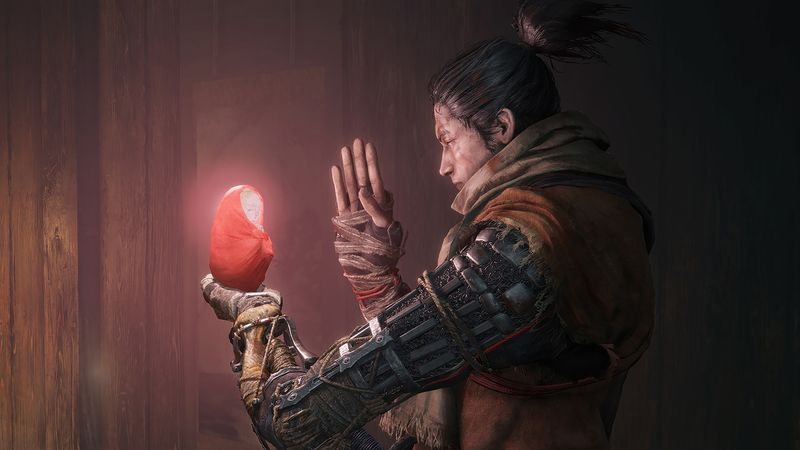
 And as far as speedrunning goes, I’m thrilled with how every second counts when you’re engaging with Sekiro’s high-octane battles and intricate level design. The game’s mix of rewards and challenges makes each run a chance to perfect your skills, and I’m excited to see what new strategies players come up with. Every moment feels earned, and that’s a huge part of its charm.
And as far as speedrunning goes, I’m thrilled with how every second counts when you’re engaging with Sekiro’s high-octane battles and intricate level design. The game’s mix of rewards and challenges makes each run a chance to perfect your skills, and I’m excited to see what new strategies players come up with. Every moment feels earned, and that’s a huge part of its charm.
 Before we close, here are a few similar games worth checking out if you enjoyed Sekiro. Dark Souls III offers a similarly challenging experience with a rich, interconnected world. Bloodborne provides a Gothic, fast-paced combat system with deep lore. Nioh 2 blends historical settings with intense combat mechanics in a way that’s reminiscent of Sekiro. Ghost of Tsushima beautifully reimagines samurai narratives with open-world exploration. Ninja Gaiden Sigma combines classic ninja action with modern design twists. Each of these has its own unique contributions to the action and adventure genres, much like Sekiro does.
Before we close, here are a few similar games worth checking out if you enjoyed Sekiro. Dark Souls III offers a similarly challenging experience with a rich, interconnected world. Bloodborne provides a Gothic, fast-paced combat system with deep lore. Nioh 2 blends historical settings with intense combat mechanics in a way that’s reminiscent of Sekiro. Ghost of Tsushima beautifully reimagines samurai narratives with open-world exploration. Ninja Gaiden Sigma combines classic ninja action with modern design twists. Each of these has its own unique contributions to the action and adventure genres, much like Sekiro does.
 Thanks, everyone—it’s been a lively discussion covering every aspect from gameplay mechanics to narrative depth. Sekiro: Shadows Die Twice stands tall among its peers, and it’s clear that whether you’re an explorer, a completionist, a competitive strategist, or a speedrunner, there’s something in this game that speaks directly to your gaming soul.
Thanks, everyone—it’s been a lively discussion covering every aspect from gameplay mechanics to narrative depth. Sekiro: Shadows Die Twice stands tall among its peers, and it’s clear that whether you’re an explorer, a completionist, a competitive strategist, or a speedrunner, there’s something in this game that speaks directly to your gaming soul.
Add Sekiro: Shadows Die Twice – GOTY Edition to your Steam Library today!

